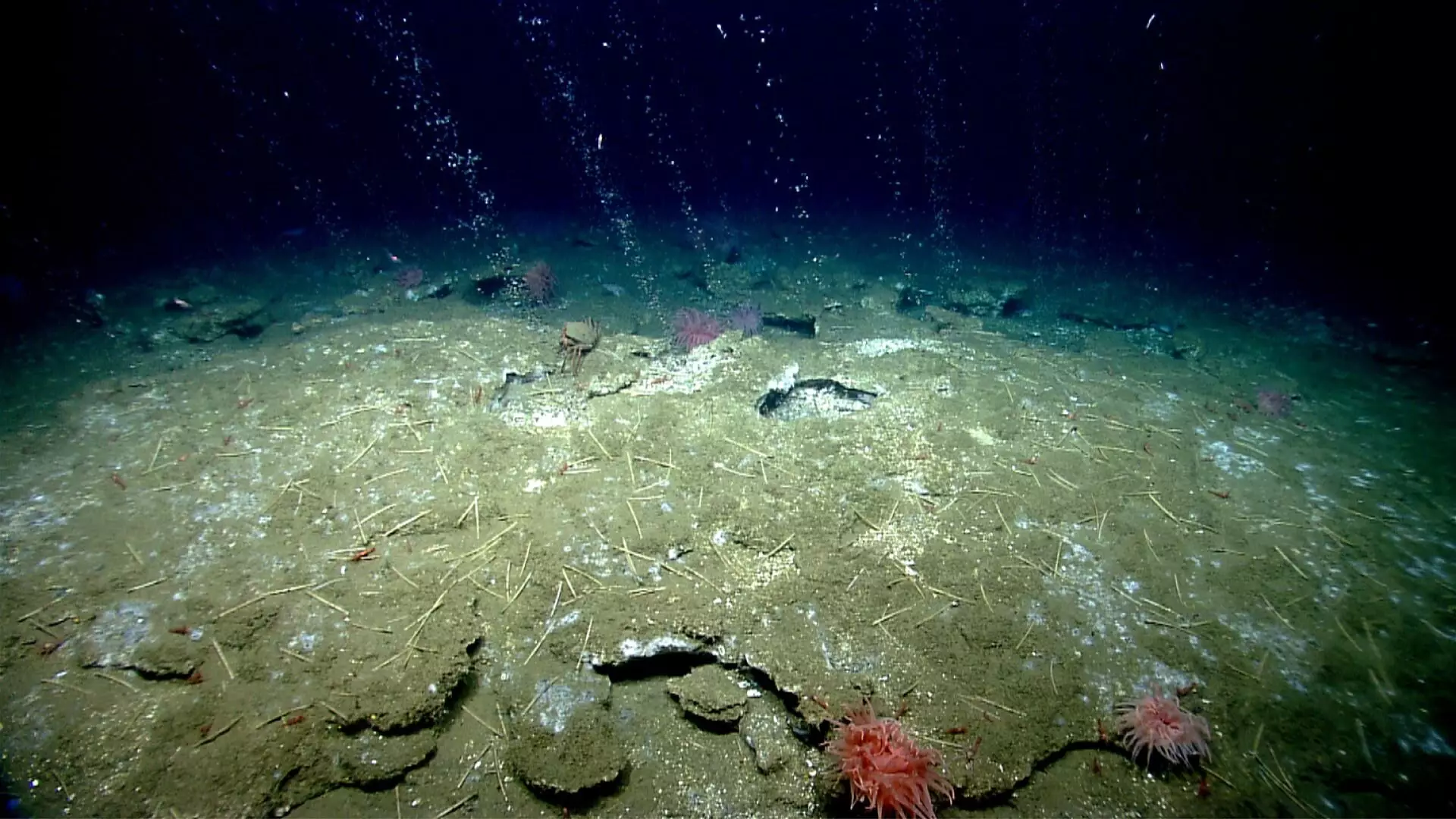Methane, a potent greenhouse gas, is stored in the form of methane hydrate under the seafloor. This ice-like solid contains massive deposits of carbon, estimated to be at least 1,800 gigatons, with some projections suggesting it could be as high as 20,000 gigatons. The concern arises from the fact that if the temperature rises, methane hydrate can break down into methane gas and water. This process leads to the release of methane into the atmosphere through “methane seeps,” potentially exacerbating the greenhouse effect.
Researchers, led by Jens Fiebig, have been investigating the destabilization of methane hydrate deposits to assess its impact on climate change. By looking into past warm periods on Earth, they aim to determine the extent to which methane release occurred. However, the challenge lies in accurately measuring the temperature of the ocean floor hundreds of thousands or millions of years ago. To address this issue, a new method called dual clumped isotope thermometry was developed by Fiebig’s research group in 2020.
Applying Dual Clumped Isotope Thermometry
The dual clumped isotope thermometry method, as described in an article published in Science Advances, focuses on analyzing carbonate minerals formed from the outgassing methane. These minerals contain isotopes of carbon and oxygen, with the arrangement of heavy isotopes providing insights into the temperature at which the carbonate formed. Dr. Philip Staudigel, who led the research, highlights the significance of non-thermal effects in determining the microbial community and methane flux that influenced carbonate formation.
By utilizing dual clumped isotope thermometry, researchers can more accurately determine sediment temperatures during carbonate formation, shedding light on past methane outgassing events. This innovative approach not only enhances our understanding of how methane hydrate deposits interact with the environment but also holds promise for predicting future methane release dynamics in the context of climate change. Continued research in this area is crucial for developing strategies to mitigate the potential impact of methane hydrate destabilization on the global climate system.
The study of methane hydrate deposits and their role in climate change presents a complex and pressing challenge for scientists. Through interdisciplinary research efforts and novel methodologies like dual clumped isotope thermometry, we are gaining valuable insights into the dynamics of methane release from these deposits. Moving forward, it is essential to further explore the implications of methane outgassing on the environment and develop proactive measures to address this significant aspect of the climate change crisis.


Leave a Reply